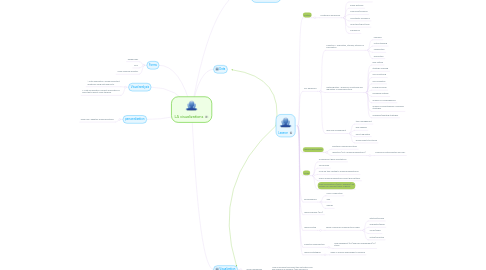
1. Forms
1.1. Dashboards
1.2. OLM
1.3. Visual learning analytics
2. Visual analysis
2.1. 1. Data exploration: answer important questions using data and facts.
2.2. 2. Data visualization: present information in ways that support visual thinking.
3. personalization
3.1. draw from "adaptive learning systems"
4. Metrics
5. Learner
5.1. Culture
5.1.1. Hofstede's dimensions
5.1.1.1. Individualist/Collectivist
5.1.1.2. Power distance
5.1.1.3. Masculine/Feminine
5.1.1.4. Uncertainty avoidance
5.1.1.5. Long-term/short-term
5.1.1.6. Indulgence
5.2. SRL behaviour
5.2.1. cognitive = acquisition, storage, retrieval of information
5.2.1.1. rehearsal
5.2.1.2. critical thinking
5.2.1.3. organisation
5.2.1.4. elaboration
5.2.2. metacognitive = planning, monitoring and regulation of learning process
5.2.2.1. goal setting
5.2.2.2. strategic planning
5.2.2.3. self-monitoring
5.2.2.4. self-evaluation
5.2.2.5. problem solving
5.2.2.6. reviewing material
5.2.2.7. analysis of comprehension
5.2.2.8. analysis of effectiveness of learning strategies
5.2.2.9. changing/adapting strategies
5.2.3. resource management
5.2.3.1. time management
5.2.3.2. help seeking
5.2.3.3. effort regulation
5.2.3.4. environment structuring
5.3. Learning dispositions
5.3.1. epistemic learning emotions
5.3.2. reflection (is it a learning disposition?)
5.3.2.1. influences metacognition and SRL
5.4. Goals
5.4.1. Achievement goals orientations
5.4.2. Social goals
5.4.3. How are they related to learning dispositions?
5.4.4. Which learning dispositions affect goal setting?
5.4.5. What visualisations (data + graphics) are suitable for different types of goals?
5.5. Demographics
5.5.1. Level of education
5.5.2. Age
5.5.3. Gender
5.6. Learning power (ELLI)
5.7. Learning style
5.7.1. Felder-Silverman Learning Style Model
5.7.1.1. Intuitive/sensing
5.7.1.2. Sequential/global
5.7.1.3. Visual/verbal
5.7.1.4. Active/reflective
5.8. Cognitive learning style
5.8.1. field dependent (FD) and field independent (FI) styles
5.9. Learning strategies
5.9.1. deep vs surface approaches to learning
6. Visualization
6.1. social comparison
6.1.1. How much does this affect the motivation and self-efficacy of learners? (self-efficacy is positively correlated with engagement,

